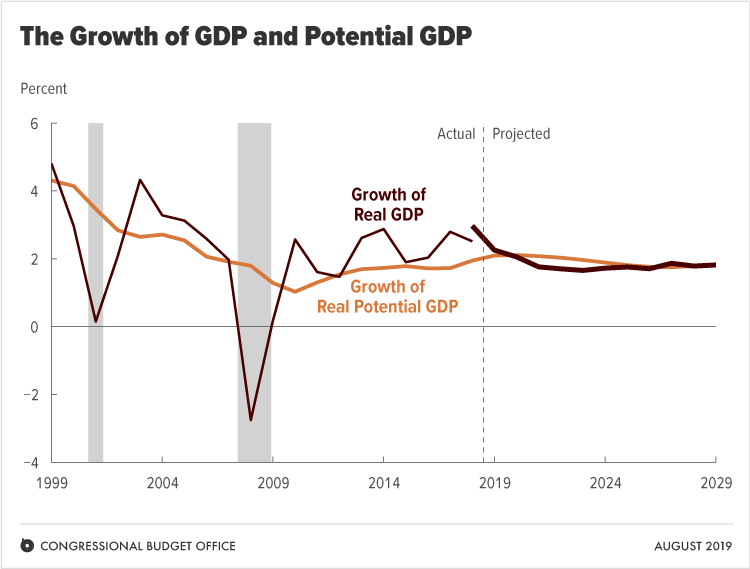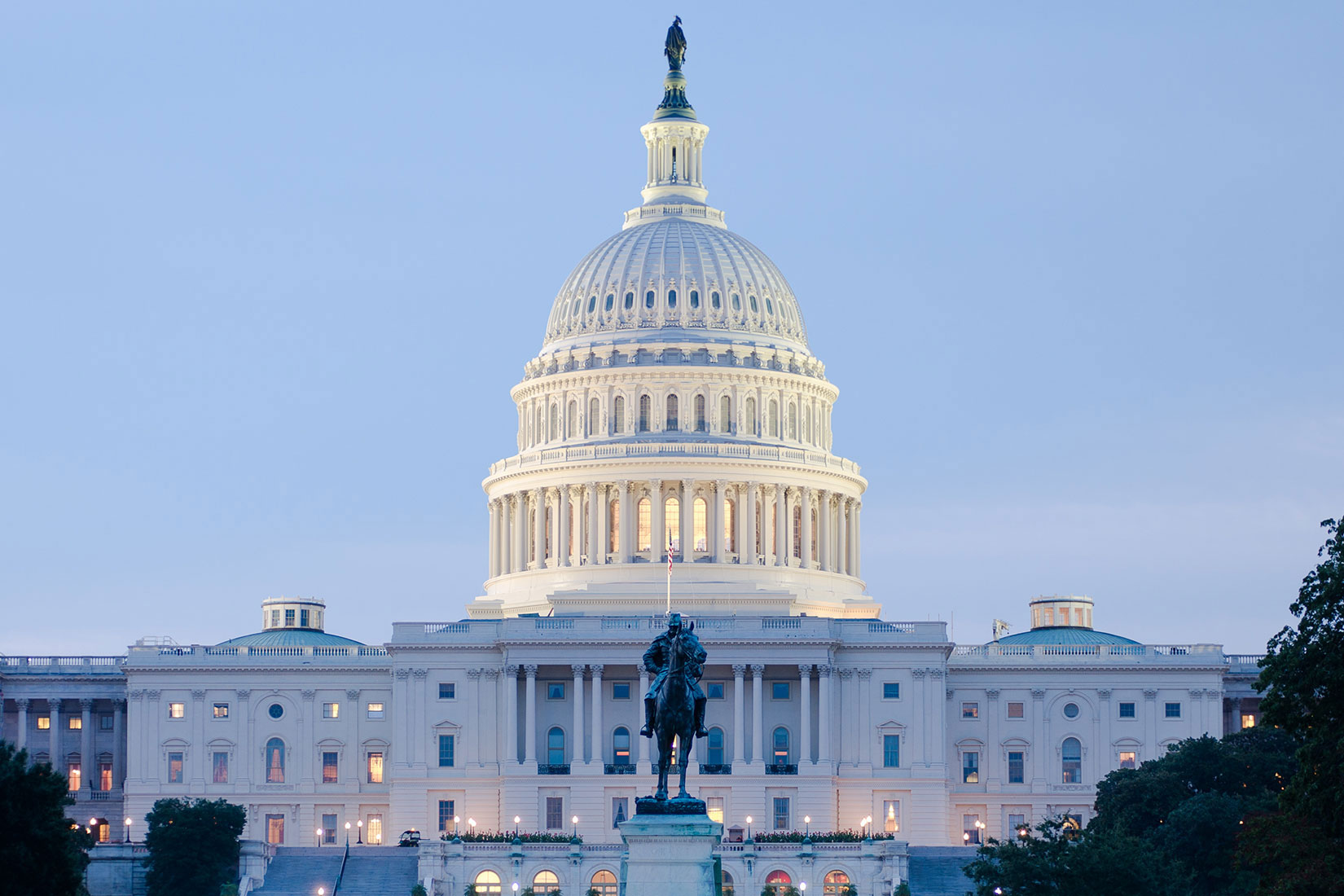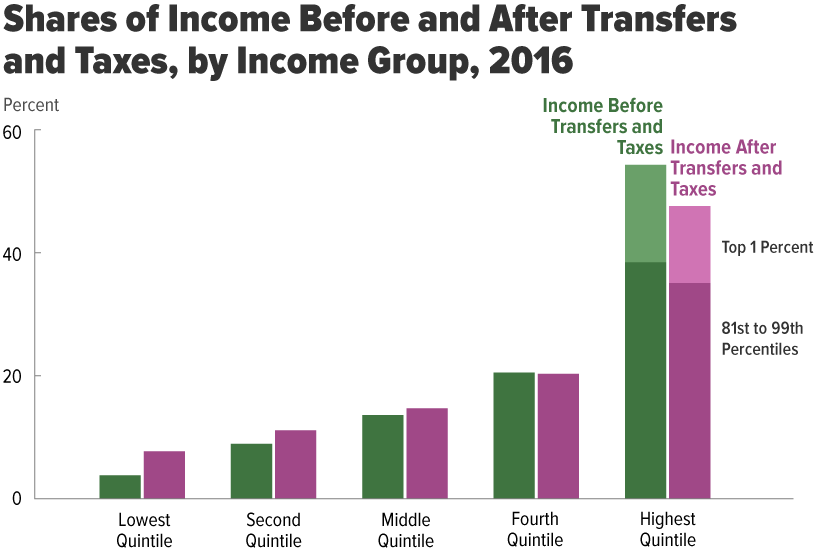If current laws governing federal taxes and spending generally remained in place, the economy would expand by 2.3 percent this year and then grow at an average annual rate of 1.8 percent over the next decade, CBO projects.
CBO Blog
Today, CBO released An Update to the Budget and Economic Outlook: 2019 to 2029. In that report, we provide our latest projections of the federal budget and the U.S. economy under current law for this year and the decade that follows.
In a report required by law, CBO provides estimates of the caps on discretionary funding for each fiscal year through 2021. CBO concludes that the discretionary appropriations provided to date for 2019 do not exceed the caps for this year.
According to CBO’s projections, if the plans described in the 2020 FYDP were implemented, DoD’s costs would increase from the $718 billion requested for 2020 to $776 billion (in 2020 dollars) by 2034.
The federal budget deficit was $867 billion for the first 10 months of fiscal year 2019, CBO estimates, $184 billion more than the deficit recorded during the same period last year. Revenues were $92 billion higher and outlays were $276 billion higher than in the same period in fiscal year 2018.
CBO will release An Update to the Budget and Economic Outlook: 2019 to 2029 on Wednesday, August 21, at 11:00 a.m. The report will contain the agency’s latest budget and economic projections.
On Monday, July 29, CBO Director Phill Swagel will speak to the Aspen Economic Strategy Group about the long-term fiscal challenges facing the nation. This blog post is provided to the members of the audience as background for those remarks.
In 2016, average household income before accounting for means-tested transfers and federal taxes was $21,000 for the lowest quintile and $291,000 for the highest quintile. After transfers and taxes, those averages were $35,000 and $214,000.
The federal budget deficit was $746 billion for the first nine months of fiscal year 2019, the CBO estimates, $139 billion more than the deficit recorded during the same period last year. Revenues were $69 billion higher and outlays were $208 billion higher than during first nine months of 2018.
The federal minimum wage is $7.25 per hour for most workers. In this report, CBO examines how increasing the federal minimum wage to $10, $12, or $15 per hour by 2025 would affect employment and family income.









